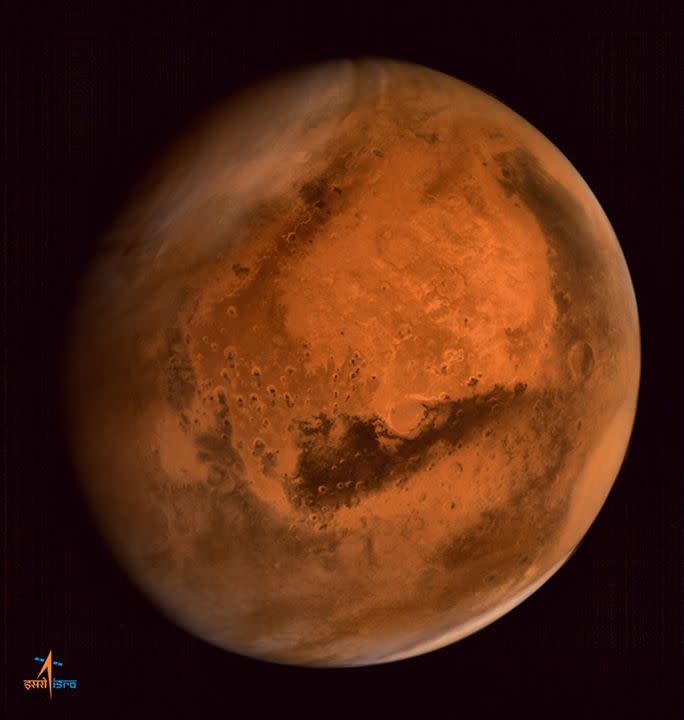 Rob Waugh
Rob WaughFive unexpected - and nightmarish - symptoms of space travel
Space travel isn't all about stepping from spacecraft and telling everyone about giant steps - in fact, it's often positively nightmarish.
Hallucinations are a common complaint for astronauts, caused by cosmic rays hitting the optic nerves - and other dangers faced by astronauts are almost too disgusting to talk about.
NASA made early space travellers purge themselves with laxatives before flying, which may offer a hint at the level of toilet facilities you should expect up there.
Below are our top five reasons why wannabe astronauts should take a cold, hard look at their chosen career and wonder - is this really for me?
Hallucinations
Hallucinations are not an abnormal experience for astronauts - in fact, they’re unbelievably common, with many astronauts reporting seeing flashes of light, which one described as ‘like dancing fairies’.
The ‘flashes’ experienced by astronauts are thought to be caused by cosmic rays hitting astronauts' vissual nerves. Space station astronaut Don Pettit described his visions as appearing, ‘In the dark confines of my sleep station with the droopy eyelids of pending sleep’.
More alarmingly, astronauts have hallucinated so badly they have been brought home from missions due to non-existent dangers. A Soviet crew reported a strange, acrid smell on board the Salyut-5 space station in 1976, and were rapidly brought back to Earth.
When their replacements entered, wearing breathing apparatus, they found no smell at all - and subsequent reports revealed that the under-stress astronauts may well have imagined the whole thing.
Floating human waste

Floating human turds are a very real danger for astronauts - doing a number two in space is not easy, even today, a video by former Space Station commander Suni Williams revealed.
For Apollo 10 - one of the ‘dry runs’ for Neil Armstrong’s landing on the lunar surface - it was horrifying.
The three astronauts on board - Thomas Stafford, Eugene Cernan and John Young - faced an extremely unwelcome space invader in May 1969, as the 500-page transcript of their mission reveals.
"Give me a napkin, quick,” commander Stafford says. "There's a turd floating through the air."
"I didn't do it," command module pilot Young says. "It ain't one of mine."
The toilet facilities inside the cramped Apollo 10 capsule were not exactly five star - so much so that Apollo astronauts generally used laxatives prior to flight to clear themselves out.
[ Five movie sci-fi predictions which have suddenly come true ]
Even now, Wiliams reveals, relieving oneself while in orbit is not easy. Astronauts on the Space Station have two loos, with Williams saying of the ‘number two’ loo, 'You see it's pretty small and you have to have pretty good aim, and be ready to make sure things get let go in the right direction.'
Even then, astronauts still keep wipes on hand “in case things get out of control.”
Moon dust

Buzz Aldrin’s famous footprint in the lunar surface is not evidence of water there - it shows off how imposibly fine moon dust is. It might sound unlikely, but this can pose a serious danger.
Apollo astronauts loved the stuff, which clung on to boots and suits when they re-entered the lunar module. They smelt, and ate it (it smells and tastes slightly like gunpowder, they report).
"I wish I could send you some," says Apollo 17 astronaut Gene Cernan. Just a thimbleful scooped fresh off the lunar surface. "It's amazing stuff."
[ Mars Curiosity rover snaps traffic light-shaped rock on the red planet ]
One of Cerna’s mission colleagues, Jack Schmitt, however, breathed in some fine dust when he re-entered Apollo 17, and promptly started being congested - like ‘space hay fever’, NASA says.
Schmitt believes that the dust - which has no smell on Earth, holds chemical mysteries which are lost on the journey home. "we need to study the dust in situ--on the moon,” he says.
Sterility and cancer

Space radiation is a fact of life for astronauts - and the doses involved are sufficiently large that space tourist Dennis Tito’s proposed Mars mission in 2021 aims to recruit a married couple beyond reproductive age, as they won’t be at risk from birth defects caused by radiation.
[ NASA will let you blast your name to Mars ]
Missions to Mars would involve an unheard of amount of radiation. Astronauts on a six-month mission on the Space Station absorb 100 millisieverts of radiation. Going to Mars would involve being hit with more than six times that - and to put this in context, on Earth, we absorb around 3 millisieverts per year.
Some estimates suggest that up to 30% of the cells in an astronaut’s body would be hit with radiation during flight.
Results from the Curiosity Rover suggest that astronauts would receive just over the lifetime allowance for astronauts in one return trip to Mars - associated with a 5% rise in cancer risk. In other words, one trip and you’d have to retire.
Overheating

Astronaut Eugene Cernan discovered that even in the chilly vacuum of space, heat stroke is an alarming and very real danger.
Cernan - the last man to walk on the Moon - also performed only the third space walk in history, only to find that a layer of his space suit had ripped slightly, leaving the sun’s rays feeling like he was ‘backing into a camp fire’.
His visor fogged over with sweat, and he became ‘extremely hot’.
Worse, his suit had inflated so much during the two--hour space walk that he found it difficult to get back inside, having crawled, near-blind, the full length of the Gemini 9 craft.
Cernan later described his experience as the ‘space walk from Hell’’.

 Yahoo News
Yahoo News 